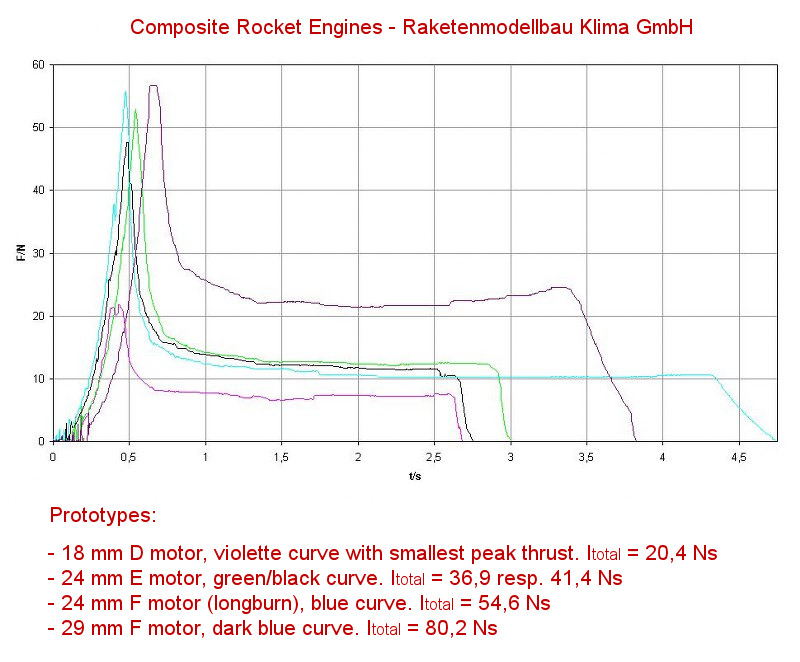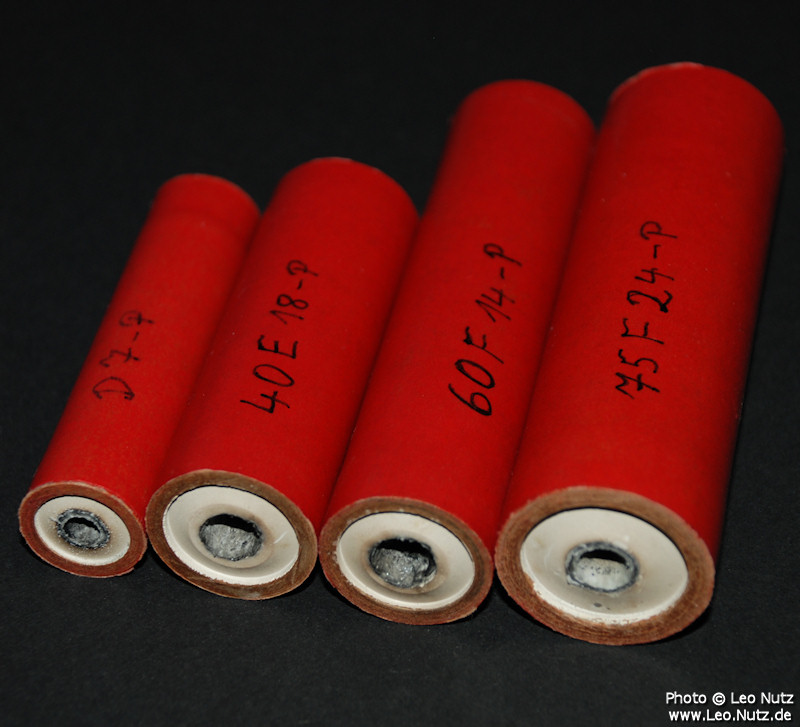Winston
Lorenzo von Matterhorn
- Joined
- Jan 31, 2009
- Messages
- 9,560
- Reaction score
- 1,748
New German Composite Engines coming soon
https://forums.rocketshoppe.com/showthread.php?t=9680&page=1&pp=10
New Quest/Klima Engines are Closer!
August 17, 2013
https://modelrocketbuilding.blogspot.com/2013/08/new-questklima-engines-are-closer.html
That article made it sound like they were going to import the current Klima line which only goes up to D total impulse.
So, what are/were these all about? Some of them being Klima motors never released anwhere?
18 mm: A6-X, A10-X, B6-X, C6-X, D7-X, longburner: C3-P, D3-P
24 mm: C12-X, D18-X, E18-X, longburner E7-P
29 mm: E22-X, F22-X



Video of firings. Beautiful shock diamonds and flame color:
https://www.leo.nutz.de/videos/forums/Klima_Motoren_Solaris_2011.mpg
Anyone know what the Klima nozzle material is? It has the shiny look of plastic.
Anyone know some links to any Klima motor patents or any relevant patents that would describe their propellant formula? I can't find any at the patent search engines. The NAR web page on European motors comments about the possible use of a pressed AP/rubber mixture.
https://www.nar.org/contest-flying/fai-spacemodeling/european-motors/
https://forums.rocketshoppe.com/showthread.php?t=9680&page=1&pp=10
New Quest/Klima Engines are Closer!
August 17, 2013
https://modelrocketbuilding.blogspot.com/2013/08/new-questklima-engines-are-closer.html
That article made it sound like they were going to import the current Klima line which only goes up to D total impulse.
So, what are/were these all about? Some of them being Klima motors never released anwhere?
18 mm: A6-X, A10-X, B6-X, C6-X, D7-X, longburner: C3-P, D3-P
24 mm: C12-X, D18-X, E18-X, longburner E7-P
29 mm: E22-X, F22-X



Video of firings. Beautiful shock diamonds and flame color:
https://www.leo.nutz.de/videos/forums/Klima_Motoren_Solaris_2011.mpg
Anyone know what the Klima nozzle material is? It has the shiny look of plastic.
Anyone know some links to any Klima motor patents or any relevant patents that would describe their propellant formula? I can't find any at the patent search engines. The NAR web page on European motors comments about the possible use of a pressed AP/rubber mixture.
https://www.nar.org/contest-flying/fai-spacemodeling/european-motors/




